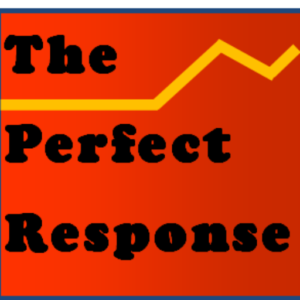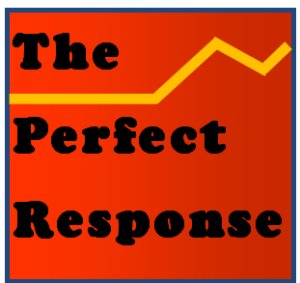CEOs can more easily act alone. Legislators can assume that applies to all leaders. But college presidents must show more forbearance.
If we thought making a corporation secure in the 21st century was difficult, we should acknowledge that the folks that manage large and small institutions of higher education have it even tougher. Recent and over-covered protests at Columbia, UCLA and elsewhere have added to these administrators’ woes. The job of president at a large university has become almost impossible because the contradictory demands of the stakeholders. There is a widespread misperception that the leadership at most schools can simply enforce policies that they establish. That may be true at Space X or A.T &T, but that is not usually how academic governance works.
The best -run campuses have a governance structure more complex that the standard corporate model of a board and senior management, where a top-down pattern still exists. Corporate rhetoric includes a lot of talk of “teams” and “creative units.” But the gap between academic and corporate governance is huge, except in the exceptions of some religious colleges and, more generally, on issues related to finance and budgeting. The idea of “faculty governance” means less in those cases, but extends to most other functions within a university.
This idea of joint deliberation means that many decisions affecting academic research and teaching programs are made in consultation with faculty and staff. This requires a lot of committees, time, and patience. If it works, the university functions like a big machine with many motors pulling mostly in the same direction. A president typically manages the managers (typically, the provost, various student service units and deans) who help sort all of this out, again, with considerable faculty input.

All of this is one reason it was cringeworthy to recently see members of Congress treat college a handful of college presidents with disrespect. The accusation: not taking a definitive action in response to evolving campus protests. They wanted the kind of decisive decisions that only a simpleton would expect from a diverse and more democratic enterprise. In the process, they ignored the values of academic freedom, the fostering of diversity, and a long-standing tradition to make the campus a place of open inquiry. The reductive nature of those questioners was breathtaking, but brutally effective in ending the careers of presidents at Columbia, the University of Pennsylvania.
There is a degree of arrogance in play when a legislator in a “hearing” uses it to abuse a leader trying to juggle the needs of a diverse constituency. Hearings are often opportunities for “show horse” legislators to give angry speeches masquerading as questions. Individuals in big deliberative bodies have little power by themselves, but they can parade their best version of a ruthless interrogator in a committee hearing. In our deteriorating political culture that is frequently enough. And that is what we got when some small-minded McCarthys made accusatory statements to some college presidents about alleged support of antisemitism on their campuses. In the process, Representatives Virginia Foxx and Elise Stefanik in particular ignored the machinery of collective governance that is still in place on most campuses. They wanted to hear about orders that were unilaterally carried out. They wanted to see faculty firings and student dismissals.
The spirit of collegial problem-solving is a frail notion that is easily crushed by such bullies. A person can demand that a student who made racist comments be expelled from a University, but strict enforcement of such a rule would end the careers of more college students than we might think. Intellectual and academic freedom needs a softer touch. CEOs can act alone, and legislators can pretend that all leaders can. But college presidents must demonstrate more forbearance.
Endless Challenges.
As a faculty member I probably showed too little sympathy for our presidents and provosts.![]() But even a cursory glimpse makes it clear that their responsibilities have become tougher. A growing number of students with serious mental health challenges have added a degree of dread in administrative offices. No one wants to call a parent to report that their young person has overdosed or taken their life. In addition, many Americans have soured on the liberal arts, replacing the goal of nurturing intellectual curiosity with an emphasis on “customer service.” Discovery and curiosity have declined as goals that should flourish. Meeting poorly conceived job expectations has partly replaced them. In my college years almost before the discovery of electricity my friends would have been mortified to have our parents call a dean or a President to challenge some aspect of our education. Now, some young adults seem to expect to be parented for most of their lives.
But even a cursory glimpse makes it clear that their responsibilities have become tougher. A growing number of students with serious mental health challenges have added a degree of dread in administrative offices. No one wants to call a parent to report that their young person has overdosed or taken their life. In addition, many Americans have soured on the liberal arts, replacing the goal of nurturing intellectual curiosity with an emphasis on “customer service.” Discovery and curiosity have declined as goals that should flourish. Meeting poorly conceived job expectations has partly replaced them. In my college years almost before the discovery of electricity my friends would have been mortified to have our parents call a dean or a President to challenge some aspect of our education. Now, some young adults seem to expect to be parented for most of their lives.
Additional challenges face college leaders today, among them: the decline of public respect ![]() for public institutions, the need for more onerous campus policing, and a reluctance in some states to sufficiently fund colleges. One result is the requirement that a president be good at the retail politics of seeking financial support from various constituents. At many institutions they must also raise enough money to support the next class of increasingly scarce first year students.
for public institutions, the need for more onerous campus policing, and a reluctance in some states to sufficiently fund colleges. One result is the requirement that a president be good at the retail politics of seeking financial support from various constituents. At many institutions they must also raise enough money to support the next class of increasingly scarce first year students.
And then there are campus sports. Participating in a sport can anchor a student. And many presidents lavish praise on their university teams as assets that everyone can rally behind. But I have taught many students whose only reason for being on campus was to play on a varsity team. And because some teams raise money for their institutions, presidents must sometimes function as de-facto managers of sports franchises. Generally speaking, our European cousins have been smarter by keeping American-style professional athletics separate from the life of a campus.
It is increasingly the rare individual who welcomes the challenge of building bridges manage all of the needs of those who feel that a university is their place. There seem to be fewer days when Presidents can focus on leading a great institution engaged in fostering great academic advances. A campus is now the world in miniature, with more of their leaders preoccupied with defusing an endless series of social, political, and economic tensions.
![]()




 Thankfully, not every case is so difficult. Apple recently ran an advertisement selling a new tablet. You may have seen the ad where a room full of creative tools–a piano, a guitar, paints, a record player, books, a trumpet–are slowly crushed in real time by a giant industrial press, leaving a tableau of shards and ruin. The tag line suggested that all of these wonderful tools are not needed if you have an Apple tablet. Only in advertising can a person be so cluelessly reductionist. Within hours media and arts creators of all sorts reacted with horror at the idea that this is what the company thought of their tools. Actor Hugh Grant called it “The destruction of the human experience. Courtesy of Silicon Valley.” The revulsion was real, and clearly not what Apple’s marketing geniuses predicted.
Thankfully, not every case is so difficult. Apple recently ran an advertisement selling a new tablet. You may have seen the ad where a room full of creative tools–a piano, a guitar, paints, a record player, books, a trumpet–are slowly crushed in real time by a giant industrial press, leaving a tableau of shards and ruin. The tag line suggested that all of these wonderful tools are not needed if you have an Apple tablet. Only in advertising can a person be so cluelessly reductionist. Within hours media and arts creators of all sorts reacted with horror at the idea that this is what the company thought of their tools. Actor Hugh Grant called it “The destruction of the human experience. Courtesy of Silicon Valley.” The revulsion was real, and clearly not what Apple’s marketing geniuses predicted.